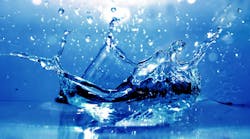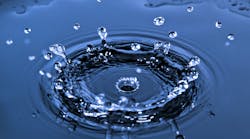LENNESTADT, Germany, March 3, 2008 -- The holms on the North Sea coast have a very important protection function for the mainland. They are used as breakwaters to calm the seafront and stabilise the banks of sand.
Among the 10 holms in the North Sea are Oland with 37 inhabitants and Gröde with just 18 inhabitants. Gröde is therefore the smallest district in Germany.
Most of the male inhabitants work for the ALR (Office for rural areas) and the coast protection scheme.
The tourism branch is also turning into a more important source of income. Life on the holms will always be determined by the tides and the weather. During ebb tide the holm Gröde cannot be reached from the mainland. The holm Oland, on the other hand, is connected to the mainland with a truck path.
The North Sea mudflats, with their area of 140.000 ha, are placed under nature protection. Any infringements in these natural areas are kept under very strict conditions. "The construction of a dirt water canal with the necessary sewage plant on both holms are not exception, even though they are acting as nature preservation means," commented Martin Woltering from the engineering office IVERS GmbH from Husum.
Oland and Gröde are the last two holms where the sewage water is collected from home-owned collection pits and transported into the North Sea. The material has to be emptied from the pits on a regular basis with difficulty and transported to the mainland. In summer there is the additional problem of sickly smells spreading out. This will soon be a thing of the past.
The sewage plants are to be built this year. To be able to keep in line with the ever increasing tourism activities, the sewage plant on Oland will be constructed to accommodate a capacity of 200 people. The Official county office of environment in Schleswig will support 80% of the construction measures.
The sewage pressure pipes on Oland are already installed and the sewage pump pits have also been installed. Work is still in process in Gröde. Work will only start on the sewage plant when this work has been completed. The old collection pits have been partially filled in or are used as rainwater collector basins.
The pipe installation is under the surveyance of the Specialist bore company Benno Paasch from Damendorf, who will install the 63 mm sewage pipe together with a cable protection pipe ND 50 for the power supply to the pump shafts using the HDD method. Together with the Engineering office IVERS, PAASCH had already made advance plans known to the holm inhabitants in a local meeting. They explained the HDD method clearly and listened to queries from the public.
The bore path plan had the intent of applying the shortest connection paths for the installations from the pump shafts to the 17 houses. The bore path initially led across the island wall and then in a circle around the island wall. The complete pipe length to be installed on Oland had a rather long 400 m, which had to be installed environmental friendly, as well as economically as possible.
In the beginning the mayor Boy-Peter Andresen was very skeptical about the whole operation, as old foundation particles were lying in the dyke area and the position of old pipes within the island surroundings were not known precisely.
Any doubts were eliminated. By setting up search slots and questioning the inhabitants, the situation was clarified. Even in case of flooding, we have made sure that the sewage plant won't cause any problems, Woltering explained. Backwater flaps inside the pump shaft prevent any sewage water being pressed back into the houses. The sewage plant is equipped with a suction pipe, so that the air supply is guaranteed during the cleaning process, even in the case of floodings.
Once a week all participants meet for a construction meeting. At 7 o'clock on the dot the truck, which was produced in the 1920s, heads up the pathway from the mainland to the holm 8 km away in the distance. The drive across the mudflats takes 30 minutes. An inspection of the construction area does not show any meaningful reasons for complaint. In the 3rd construction week everything is going to plan.
The company Paasch applied the small, self-driven HD bore rig Grundodrill 4X, manufactured by TRACTO-TECHNIK (Lennestadt), for the bores, as the installation measures gave the company a logistical challenge. The transportation of a larger bore unit would not have been possible at all.
The loading capacity for the Oland-truck is limited, as is the transport with a rented special ship to the Gröde holm.
Furthermore the flexible, space saving bore rig can be applied around the island with its tight passages. Also the 4 t-bore rig has the perfect dimensions for work in bran type ground. Only a water/polymere mixture is required to support the bore. The water is circulated inside a MA09 mixing system with a 1000 l tank. A specially widened bore head produces the pilot bore in 1,20 to 1,30 depths with a 140 mm diameter, which is expanded to 150 mm directly when pulling in the pipe lengths. The longest bore has a length of 80 m. Wherever possible, the pump shafts were used as start and target areas.
If the pump shafts were not adjacent to any houses, then installation partially took place in open slopes and open-trenching from the take-over point to the pump shaft. Depending on the positions, two houses were connected to one pump shaft.
All in all the holm inhabitants were very satisfied with the process, even if it did mean small interventions in their gardens, here and there. By the holiday season, at the latest, nothing more of the building measures will be visible either on Oland or on Gröde.
###


